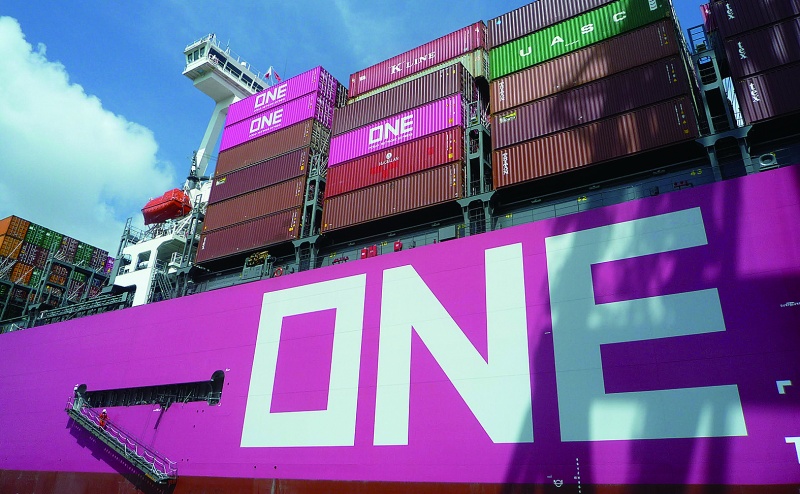
The “special demand for container ships” for Japan’s three major shipping companies is likely to be carried over to April 2024 and beyond. The main reason is that the cost burden associated with the three shipping giants’ vessels bypassing the Suez Canal has been incurred ahead of the freight rates the carriers receive from shippers. Shipping executives said the following.
The move to bypass the Suez Canal, which began in earnest in January, will take one to two months to be reflected in freight rates. At this point, we have no choice but to charge shippers after the voyage is completed”.
As shipping companies bypass the Suez Canal and the Red Sea to go through the Cape of Good Hope (South Africa), bunker (fuel oil) costs for ships and other costs will increase.
The financial results of the major shipping companies for the period April-December 2023, announced by the end of last week, showed limited upward revisions at the end of the current fiscal year.
Consolidated recurring profit forecasts for the fiscal year ending March 2024 are ¥245 billion for NYK (up ¥10 billion from the previous forecast), ¥225 billion for MOL (up ¥5 billion), and ¥135 billion for Kawasaki Kisen Kaisha (unchanged).
The reason for the modest revisions to the shipping giants’ forecasts was the lackluster performance of Ocean Network Express (ONE), an integrated container shipping company in which the three companies have invested.
ONE’s net profit forecast for the fiscal year ending March 2024 is down 94% from the previous year to just $856 million (about 126 billion yen).
According to shipping industry insiders, “Container freight rates have already increased in the January-March 2024 period, but it will not be fully reflected in the shipping giants’ earnings until the next fiscal year (2024 April),” said a representative of a major shipping company at a financial results conference.
LNG (liquefied natural gas) carriers are also at a delicate stage in terms of whether shippers will accept the increased freight rates that will accompany the diversion of ships, especially to Qatar.
Insurance companies are also increasing marine insurance premiums for shipping companies that operate vessels in dangerous areas.
On the other hand, there is plenty of room for the shipping giants to reflect the benefits of the “special demand for container ships” associated with the Suez Canal diversion in their business performance from April onwards.
According to Clarksons (U.K.), the number of 12,000 TEU to 16,999 TEU Neo-Panamax ships to be delivered in 2024 is the highest in the last three years, accounting for 42% of the order book.
If container ships continue to be deployed via the Cape of Good Hope, “the supply of newbuildings will absorb the demand for newbuildings and the supply/demand balance for shipping space will tighten, leading to higher freight rates,” according to one shipping executive.
Indeed, container lines around the world, led by Maersk and CMA-CGM, have temporarily suspended sailings in the Red Sea and Suez Canal. Container shipping freight rates are currently skyrocketing.
As of January 18, the container freight rate index for 40-foot containerships from Shanghai to Genoa, Italy, rose for the seventh consecutive week to $6,282. The latest container freight rate from Shanghai to Rotterdam also rose 12% to $4951, the highest level since September 2022.
The Japanese shipping giants are not limited to container ships, as they are “general shipping companies” and not limited to ships that pass through the Suez Canal.
In addition to ONE, there is a wide range of vessels including bulk carriers, tankers, car carriers, LNG carriers and VLGCs (very large liquefied petroleum gas carriers).
The dry conditions in the Panama Canal are expected to continue through March.
Freight rates for VLGCs and petroleum product tankers may begin to rise again.
The three major shipping companies earned a total of 163 billion yen in non-operating income from April to December 2023, mainly from ONE.
If ONE’s net income increases in the next fiscal year and beyond, this will have the effect of increasing each company’s ordinary income. If the suspension of sailings to the Suez Canal continues, the earnings of the shipping giants are expected to increase beyond this fiscal year.